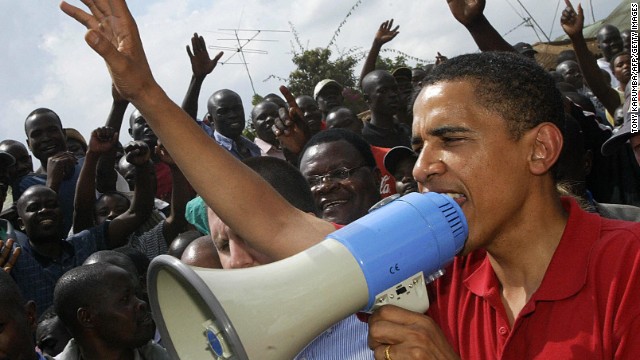At last November’s “Uniting to Combat NTDs: Translating the London Declaration into Action,” we had a chance to catch up with David Molyneux, Director of the Lymphatic Filariasis Support Centre and Emeritus Professor of Tropical Health Sciences at the Liverpool School of Tropical Medicine. Molyneux works extensively with the Centre to improve the lives of the bottom billion by contributing to the development of tools and control strategies for NTDs, specifically lymphatic filariasis (LF).
Global Network: What’s changed since you became involved in NTDs?
David Molyneux: I think the global recognition that these are serious diseases that impact poverty and development, and that they are bigger than just health conditions. I think one has to go back into the history of this, to the time I started to work with Peter Hotez and Alan Fenwick […] There was no momentum for delivery or implementation, at the time, because there were no drug donations. I think that like all movements, in science and particularly in health, these are evolving processes, and they evolve on the basis of science, they evolve on the basis of advocacy, and in the end they evolve on the basis of rational thinking in terms of cost effectiveness. It seems that we created some kind of momentum to address something which is imminently doable.
When I was running the Onchocerciasis Control Program Expert Committee, it was very interesting at the time. Many of the experts around the table didn’t want the non-governmental organizations to be involved. They said that this has got to be done through the health services, it’s got to be done by mobile distribution. But gradually, they recognized that that was just not feasible.
It’s been an evolving process, it’s been based on science, on massive pharmaceutical donations, and on a rational approach to health […] we have to recognize that we’re dealing with the poorest people, and if you’re actually going to make an impact on poverty, you need to address the problems of the poorest. […] If we don’t address their problems, we’re never going to achieve any of the millennium development goals. It’s very satisfying to see how many people are now involved and engaged from different quarters and different sectors, nationally and internationally.
GN: What is the value of integration in NTD disease programs?
DM: I think the concept of integration is about making the best use of the facilities available at the national level and maximizing the impact of the resources at one’s disposal. We started to talk about integrated control when we looked at these diseases separately. We were wasting resources doing two deliveries a year, three deliveries a year for diseases which could be treated with the same drug […] It’s trying to make the best use of available resources, which are naturally scarce, recognizing that the drugs hit more than one infection, and looking to opportunities in other health programs.
GN: What is one wish you have for the NTD community?
DM: I have two wishes. One is the passing of the World Health Assembly Resolution in May next year, so all member states commit to neglected tropical disease control and elimination […] The second one relates to the identification of these diseases in the post-2015 millennium development goals. If we achieve that, we’ve come a very long way in highlighting the problems of the poor because this is an equity issue.
[editor’s note: the World Health Assembly did pass the resolution, see a related blog on that topic here; meanwhile, the UN high-level panel identified NTD control and elimination as a priority, though talks continue, see related blog post here.]
GN: Why should we care about NTDs?
DM: I think there are several answers to that question. Why they should care? Because it’s common humanity […] It is also a human rights issue, it has resonances of equity, it has resonances of areas beyond the physical impediments – blindness, deformity, stigma. There are other, broader issues in relation to health burden […] such as the mental health burden associated with conditions such as we see in NTDs.
So, there is a whole plethora of reasons for doing this and for trying to convince the public out there that they have an obligation, first of all, to see taxpayers’ money appropriately spent in buying more health for less money. [We have an obligation to recognize] issues around common humanity, and issues around equity and human rights. I don’t think it would be ever accepted that we allow conditions such as elephantiasis, particularly male genital elephantiasis or scrotal elephantiasis, to exist when all you need is to do surgery at a cost of $50 per person to treat it. […] So for me it’s as you say a no brainer, I don’t have any doubt about that, and for me also, our job and our mission, and your job in terms of advocacy, is to make sure that more people know about this and more people feel guilt that they’re not doing something about it.


 Despite this relatively bleak analysis of the problems posed by NTDs in children, the authors are optimistic that we “may be able to reduce or eliminate the tremendous NTD disease burden in children globally.” Public-private partnerships (PPPs), expanded MDA and preventive chemotherapy programs, greater pill donations from pharmaceutical companies, the development of new drugs and the creation of new vaccines (Sabin is working on developing hookworm and schistomiasis vaccines) all offer real solutions.
Despite this relatively bleak analysis of the problems posed by NTDs in children, the authors are optimistic that we “may be able to reduce or eliminate the tremendous NTD disease burden in children globally.” Public-private partnerships (PPPs), expanded MDA and preventive chemotherapy programs, greater pill donations from pharmaceutical companies, the development of new drugs and the creation of new vaccines (Sabin is working on developing hookworm and schistomiasis vaccines) all offer real solutions.